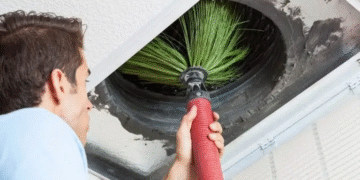Key Takeaways
- Moisture control is crucial in maintaining a healthy home environment.
- Common challenges and practical solutions are available to manage moisture effectively.
- Taking proactive steps can prevent future issues and safeguard your home.
Understanding the Importance of Moisture Control
Controlling moisture is fundamental to maintaining a home’s structural integrity and its inhabitants’ health. Stagnant water or chronic dampness often goes unnoticed until the damage is extensive. Such conditions can easily lead to the growth of mold and mildew, contributing to degraded indoor air quality and potential health issues like respiratory distress, skin irritations, and exacerbated allergies. The importance of moisture control extends further into preserving the home’s financial value, reducing long-term repair costs, and improving energy efficiency, as dry air is easier and cheaper to heat and cool.
Effective Strategies for Managing Moisture
Combatting moisture effectively entails implementing both preventative and remedial strategies. Primarily, ensuring proper ventilation is key; strategically placing and using windows, vents, and exhaust fans is essential to maintaining appropriate air circulation throughout the home. Dehumidifiers are another critical tool that helps manage and maintain relative indoor humidity levels. In areas particularly prone to persistent dampness, such as beneath the house, crawlspace encapsulation may also be necessary to create a moisture barrier and prevent humidity from seeping into the living space. According to Family Handyman’s expert tips, simple do-it-yourself tasks such as sealing leaks, applying weather stripping, and utilizing moisture-absorbing materials can make a substantial, lasting impact. For more convoluted moisture issues, consulting a professional for an in-depth assessment might be necessary to ensure every hidden aspect of moisture infiltration is properly addressed.
Factors Leading to Moisture Problems
A wide array of factors can contribute to moisture issues within a home. According to water damage cleanup companies, common culprits include leaks stemming from roofs, windows, and plumbing systems. Inadequate ventilation in basements and bathrooms can exacerbate these issues, leading to trapped moisture and mold growth. Weather patterns also play a significant role, as outlined by NASA’s climate insights, seasonal and regional differences in temperature and humidity heavily influence indoor moisture dynamics. Flooding, rainstorms, and even regional humidity contribute significantly to moisture challenges. Understanding these factors and the changes they bring can help anticipate and address moisture concerns effectively.
Common Signs of Excessive Moisture
Early detection of moisture issues is essential in mitigating severe problems. Several telltale signs can alert homeowners to potential moisture problems. These include damp spots on walls or ceilings, visible mold, peeling and bubbling paint, and persistent musty odors. Condensation on windows and discoloration of surfaces can also indicate elevated indoor humidity levels. By understanding and acknowledging these signs, homeowners can take timely action to control and remediate moisture, significantly reducing potential damage.
Benefits of Maintaining a Dry Home
Proper moisture management has advantages beyond health benefits. It primarily enhances air quality, thus augmenting the overall comfort level of the home environment. Addressing moisture proactively helps negate factors contributing to decay and deterioration, ensuring the home’s value is preserved or even increased. Furthermore, controlling moisture increases the home’s energy efficiency, as managing dry air is less costly for heating and cooling operations.
The Role of Crawlspace Encapsulation
Crawlspace encapsulation is increasingly recognized for its effectiveness among the tools available for moisture management. This method involves lining a crawlspace with vapor barriers to prevent soil-based moisture from affecting the home. It significantly reduces humidity levels, burdening the structural foundation with less stress and lowering the risks of mold growth. Beyond moisture control, encapsulation improves a home’s overall energy efficiency by sealing cracks and air leaks, reducing energy costs due to improved insulation and airflow.
Proactive Measures for Home Protection
Undertaking regular maintenance practices is essential to avoid potential moisture issues. Homeowners should consider performing periodic checks of roofs and gutter systems, keeping them free from leaks, blockages, and ensuing damage. Conducting inspections every season facilitates the prompt identification and resolution of moisture problems. Proactively maintaining a clean, dry, and well-ventilated home is your best defense against moisture accumulation and the complications that arise from it. These consistent measures will help preserve the sanctity of living spaces and ensure sustained health benefits.

















